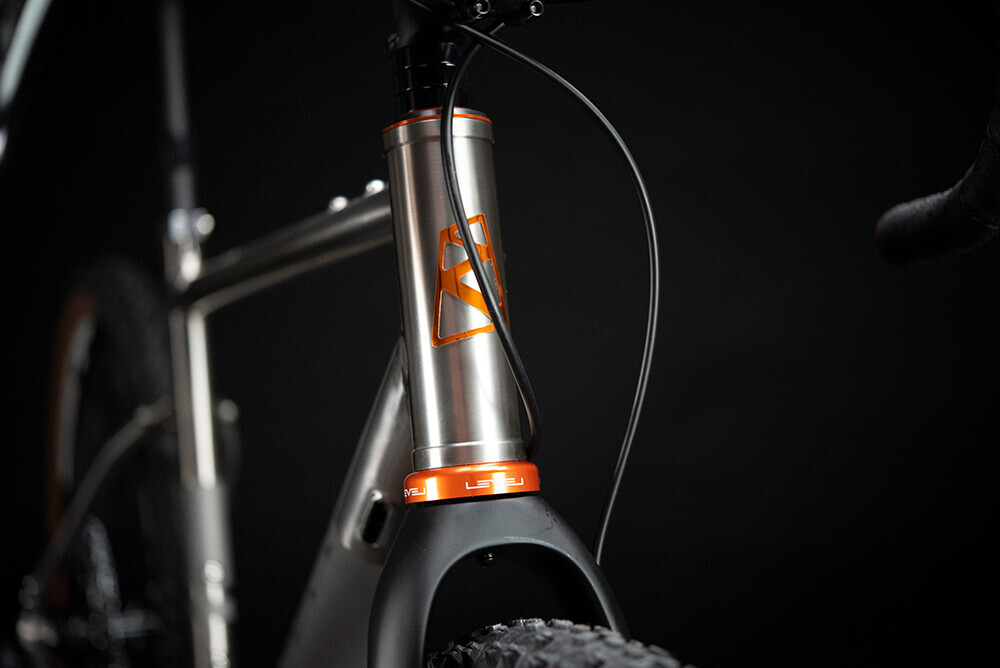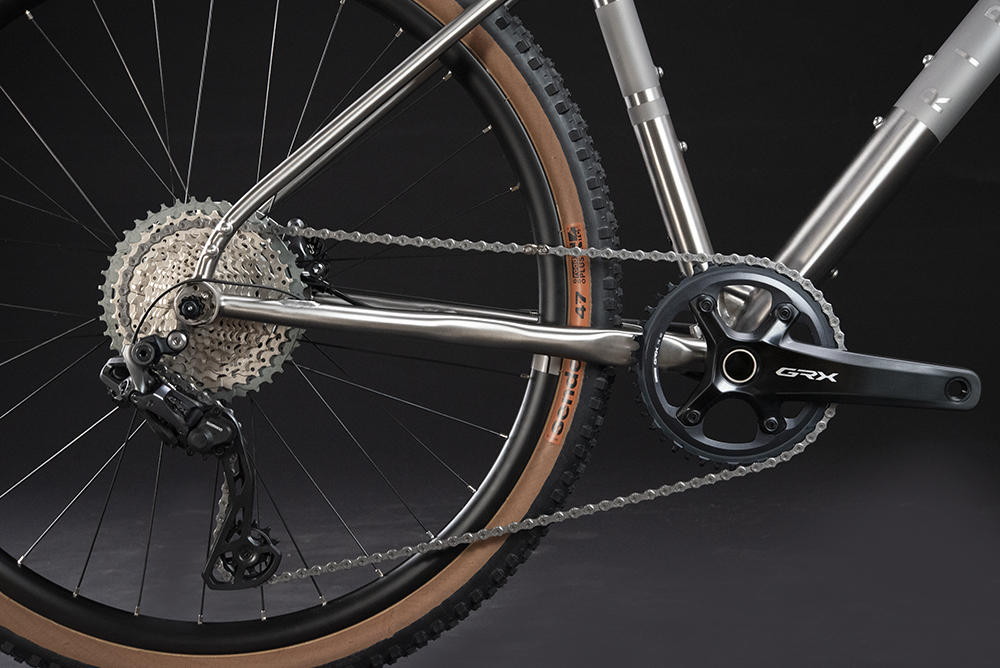
With their drop handlebars and big tyre clearance, cyclocross and gravel bikes seem to share many of the same features. So how do they differ? We take a look at the Ribble CX and Gravel range of bikes to highlight the key differences between cyclocross vs gravel bikes.
History
Firstly, we start off with a brief history of the origins of both types of bikes. What we commonly refer to as the cross bike of today has been around for a very long time. In fact, we can date their origin back to 1902, when the French conceived a new form of racing. They would simply pick a landmark on the horizon and race each other to be the first to reach it. This was a strictly an 'as a crow flies' race, so competitors would head for the objective in a straight line. Even if this meant that they had to ford streams and scramble over walls. Today its successor, cyclocross, is one of the fastest-growing disciplines in cycling.
Gravel bikes, on the other hand, have only been around for a handful of years. The idea for this new type of bike was conceived in the US and was once again kickstarted by a new form of racing. In the early noughties, a handful of intrepid, like-minded riders would race as diverse an array of bikes as you are ever likely to see along the unpaved backroads of North America.
These bikes would range from hardtail MTB's to road bikes with as wide a tyre as could possibly be shoehorned into the frame. The problem was that MTB's were found to be too slow for this form of racing and road bikes simply didn't offer the tyre clearance. So a new type of bike was required, one faster than an MTB, but offering many of the same capabilities. So the gravel bike was born.
But what exactly constitutes a Cyclocross bike and what sets it apart from a gravel bike? At first glance, there is little to tell cyclocross vs gravel bikes apart.

Ribble Weldtite's Jacob Tipper, Rich Jones, and Will Brown training for Dirty Reiver aboard their CX SL and Gravel SL bikes.
Geometry
Cyclocross bikes are designed to be raced on cyclocross circuits that are tight, twisty and technical. The surfaces of these courses can often range from mud, rock, sand or even snow! They also include both man-made and natural obstacles such as steep slopes or barriers that leave the rider no choice but to dismount the bike to continue. Consequently, cyclocross bikes are designed with a taller bottom bracket relative to gravel and road bikes.
A shorter wheelbase and low stack height offer significantly more agile handling than a gravel bike. This is crucial in a cross race where riders repeatedly slow down rapidly into tight turns and then accelerate out of turns for lap after lap. A horizontal top tube provides more space in the front triangle for shouldering the bike. The underside of the top tube is also typically flat to reduce discomfort when carrying the bike.
Gravel riding, on the other hand, doesn't typically feature such repetition of tight corners and constant decelerations and accelerations. Instead, the average gravel ride will normally involve riding at constant speeds over longer durations. Without the need to dismount the bike in most instances. Therefore a geometry that offers more stability is advantageous. The gravel bike achieves this by having a longer wheelbase, a slightly lower bottom bracket, and a taller stack.
Tyre Clearance
Although there is no de facto tyre clearance for a cross bike, the UCI (cycling's governing body) does impose a limit of 33mm for UCI sanctioned events. Locally held races may not hold to this limitation so it's highly advisable to check with the league officials/race organisers. However, we have designed the Ribble CX range to offer more versatility. As a result, both the CX AL and CX SL are compatible with 38mm tyres to enhance their mud shedding capabilities.
Gravel bikes aren't constrained by the same rules so are designed with dual wheel size compatibility. The option to fit 650b or 700c wheels provide more freedom to fine-tune the loadout of the bike to suit various terrains/conditions. Our range of Gravel bikes offers a tyre clearance of 45mm on 700c wheels and 47/50mm on 650b's. The smaller wheel diameter of the 650b wheels allows a larger volume tyre to be fitted which improves traction. Especially on muddy or rocky terrain.
Left: CX SL, Right: Gravel Ti showcase their generous tyre clearance.
Luggage
Given the performance-oriented nature of a cross bike, it should come as no surprise that luggage mounts are not included in its design. They will, of course, still accept the usual array of saddlebags and frame fit bags but there are no pannier mounts.
Gravel riding is all about the sense of adventure and off-road exploration. This is why our gravel range is packed full of storage solutions. Every possible eventuality is catered for, allowing a rider to carry hydration, nutrition, tools, and anything else that could possibly be required for a circumnavigation of the globe. The gravel family of bikes includes everything from pannier mounts to extra bottle cage fitting and carryall mounts on the fork.
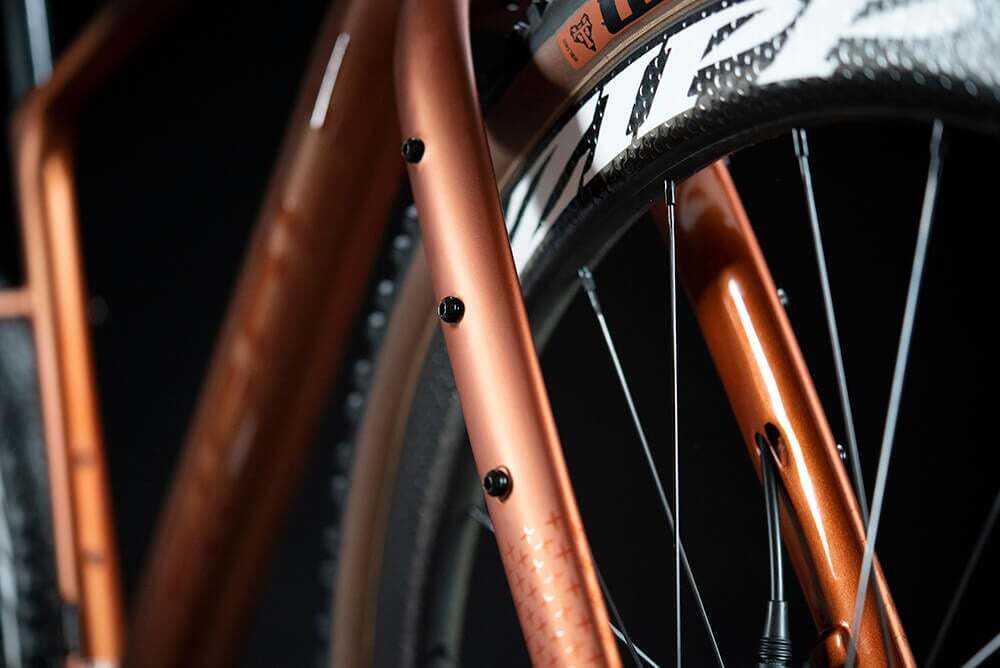
Carryall mounts on the front forks allow oversize cages to be fitted for carrying rolled up luggage items.
Gearing
As we alluded to earlier in the blog, cross races involve short but high-intensity efforts. The gearing requirements may differ between individual courses. But on the whole, they generally do not require the low gear range for a gravel bike. Typically you will find most CX bikes specc'd with 46x36 at the front and 11-36 at the rear. This gear range ensures that steps between gear shifts are kept to a minimum. As a result, pedalling cadence is much more efficient and power transfer more consistent. Additionally, any steep slopes that feature in cross races are often too tricky to ride up so a wider range is unnecessary.
When out gravel riding it's difficult to predict the exact mixture of terrains and conditions that you may encounter. It's likely that you will have to tackle short, punchy climbs and long winding descents. Additionally, the terrain will vary from hard pack to sand, mud and everything in between. Such extremes of terrain and surfaces require a low gear range that can help you conquer the toughest climbs yet still engage in a competitive sprint with your ride companions.
Most gravel machines (ours included) will almost exclusively be kitted out with a 1x drivetrain. Typically this will consist of a single ring of 38-42 teeth at the front and an 11-42 cassette at the rear. More rarely seen is a gravel bike with a 2x drivetrain with a 48-32 upfront and an 11-36 at the rear. However, most pure gravel machines will favour the 1x system for the added simplicity and reliability that it offers.
Left: CX SL with a cross-specific drivetrain. Right: Gravel Ti with Shimano GRX 1x drivetrain.
Handlebars
Having to conform to UCI regulations restricts cross bikes to standard road drop handlebars. Though the additional aerodynamic benefits that they offer may also play a part in their popularity.
Unaffected by any such regulations means that the sky's the limit when it comes to speccing handlebars for a gravel bike. The most popular choice by far is the flared bar. Across the tops, they are just like a normal bar, however, the drops flare out in dramatic fashion. This extra width delivers a stable riding position for descending rough or steep terrain.
On the left is the Gravel AL e with flared bars and on the right with the CX SL with LEVEL 5 carbon integrated bars.
The Ribble CX range

Jenson Young of Garden Shed UK - Ribble - Verge Sport lifts his CX SL carbon cross bike over an obstacle with ease.
Designed with the highest level of competition in mind, the CX AL and CX SL are alloy and carbon drop-bar bikes that are specifically designed for racing around short off-road circuits. Cyclocross racing requires a bike that's capable of coping with tight, technical courses, so it needs to offer precise handling, efficient power transfer, and good mud-shedding characteristics. The bikes have to conform to rules set by cycling's governing body (UCI) and so face certain design constraints.
- Horizontal top tube - The front triangle of the frame features a horizontal top tube design to make it easier to shoulder the bike over/around obstacles. The underside of the tube is also flat to eliminate any discomfort when carrying the bike.
- Rider position - A combination of steep frame angles, short head tube, and long top tube give the rider a more aggressive race-oriented race position.
- Wheelbase - A shorter wheelbase enhances agility, making the bike more nimble. Which is crucial when dealing with tight, technical cross circuits.
- Tyre Clearance - UCI rules dictate that the maximum tyre size for competitive racing is 33mm. However, the CX SL and AL frames mud shedding capabilities are enhanced by clearance for 38mm tyres.
- Luggage Carrying - The frame design of the CX range does not include mounting points for pannier racks.
- Handlebars - A CX bike will be fitted with the same drop handlebars that are specc'd on any road bike.

The CX SL is a superlight carbon cross bike designed for the highest levels of CX racing.
The Gravel range
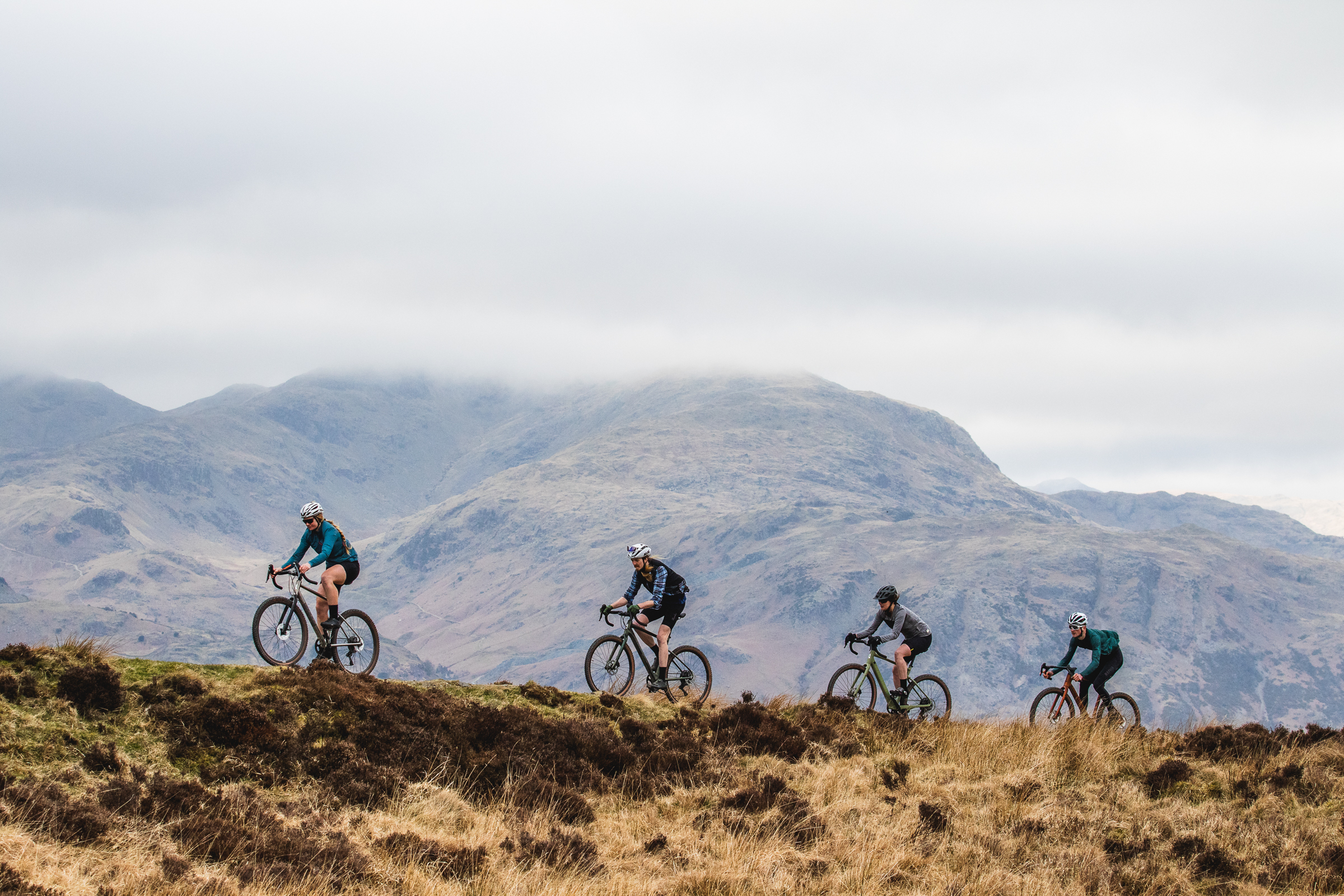
From left to right; Gravel Ti, Gravel AL, Gravel AL e and Gravel SL.
Where the road ends and the off-road adventure begins is where the Gravel bikes explode into life. They feature lightweight frames, stable off-road geometry, and huge tyre clearance. Our range of gravel bikes are designed to ride faster, smoother, and explore the most challenging terrain. Available in a choice of frame materials, each offering a different ride dynamic and there's an e-bike model to ensure that no off-road adventure is outside your comfort zone.
- Sloping top tube - The sloping top tube tube design creates a more compact frame for more efficient power transfer.
- Rider position - A geometry derived from that of hardtail MTB's offers a longer and lower frame with slacker angles to deliver a more planted feel over technical terrain.
- Wheelbase - The longer wheelbase of the gravel bike offers more stability over tougher terrain than you would expect from a CX bike.
- Tyre Clearance - There's ample clearance for 700x45c and 650bx47mm tyres which opens up a whole wealth of tyre options with different tread patterns to suit every type of condition and surface.
- Luggage capacity - Multiple mounting points offer plenty of luggage carrying capacity. These include mounts for a rear pannier rack, carryall mounts on the forks and extra bottle cage fixing points to help you stay hydrated on the biggest bikepacking adventures.
- Handlebars - Flared handlebars provide a wider stance for more stability and control over the most challenging terrain.

Ribble Weldtite Pro Racing's Jacob Tipper completed Dirty Reiver 200 aboard the Gravel SL.
Cyclocross vs Gravel bikes summary
So, what are the key differences between cyclocross vs gravel bikes?
- Geometry - The cyclocross bike has a more aggressive race position which results in the rider being more stretched out. The gravel bike, on the other hand, features a slightly more upright position. This makes them ideal for rides ranging from the quick hour-long jaunt to all-day or bikepacking epics.
- Top tube - Our CX bikes have a horizontal top tube which makes them easier to shoulder in CX races. The gravel bikes have a more sloped top tube which results in a compact geometry for mroe efficient power transfer.
- Tyre clearance - CX bikes are restricted by UCI regulations to a maximum clearance of 33mm. Though our CX AL and CX SL frames both offer clearance for 38mm tyres, the Gravel bikes are compatible with tyres up to 47mm.
- Cable routing - All of the gravel range is compatible with electronic gearing. The CX SL carbon is also compatible with electronic gearing but the CX AL lacks the necessary cable routing.
- Gearing - In general CX races tend to feature less varied terrain. The really steep stuff is more often than not unrideable so cross racers don't really require a wide gear range. Gravel bikes however, have to cope with extremes of terrain so a huge gear range is advantageous.
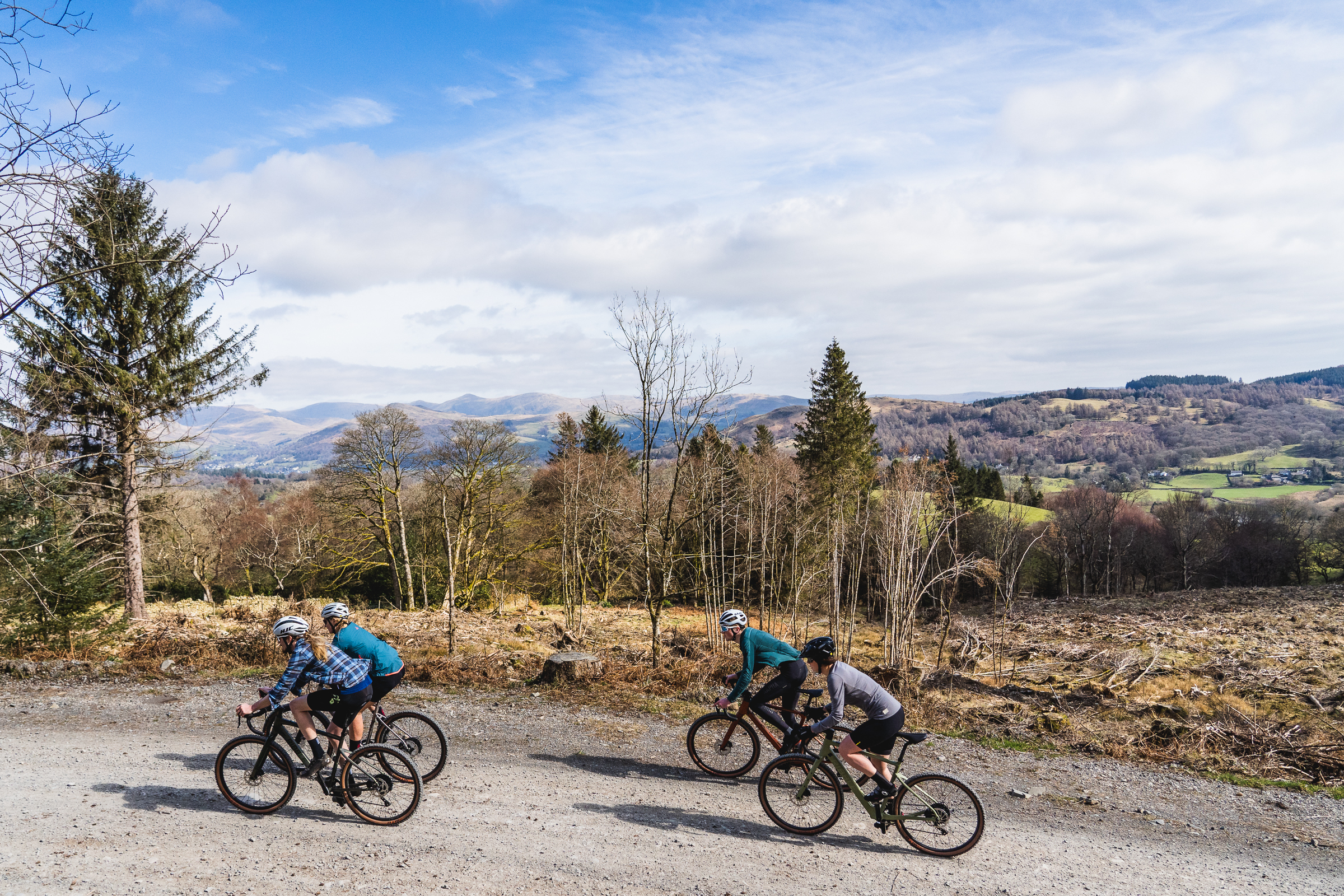
Explore.Race.Escape. The Ribble Gravel range gives you the freedom to explore.
In summary
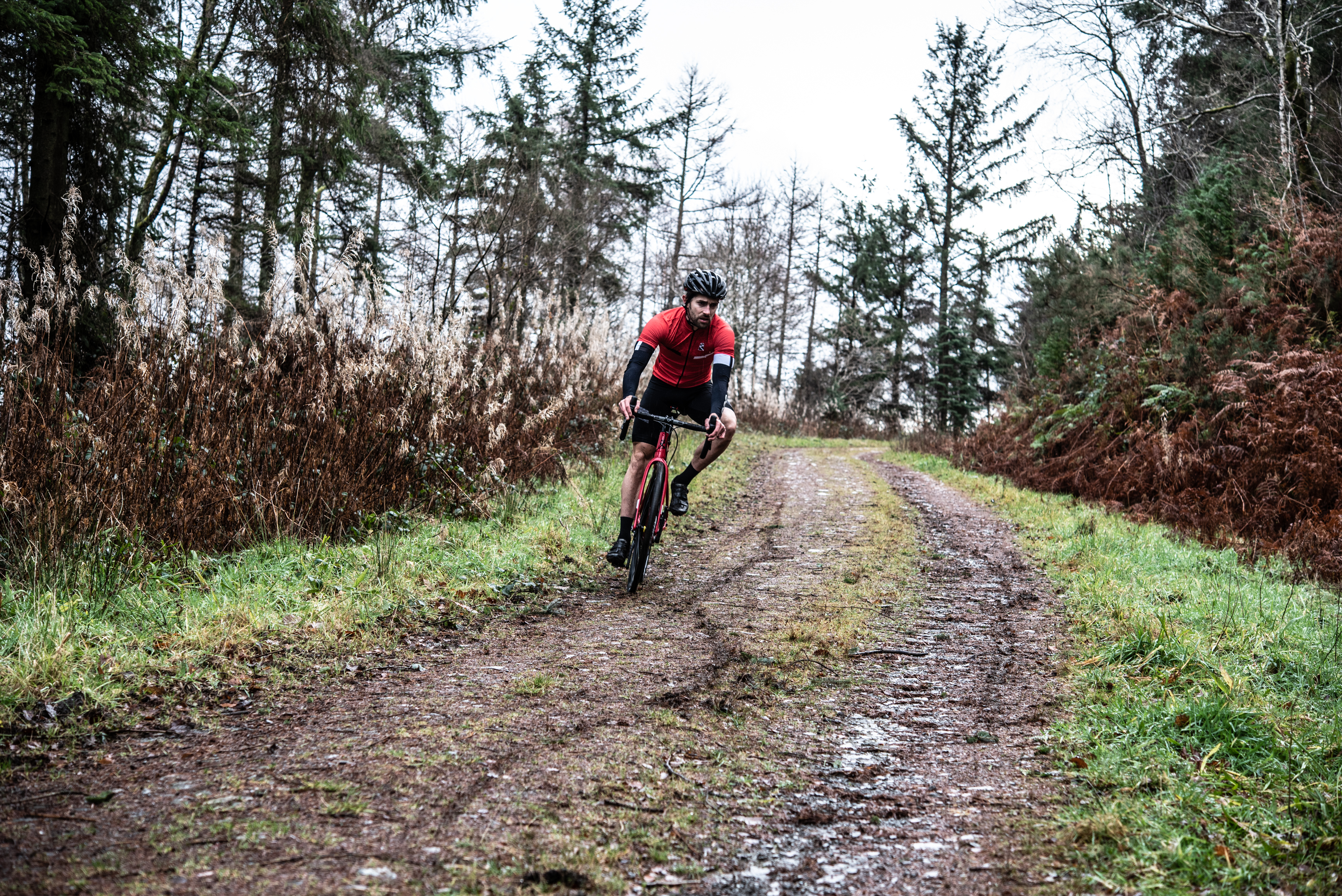
The CX AL is made for carving through the mud!
There's no question that when you wish to leave the road behind and head off the beaten track both are attractive propositions. Though on paper they look to be very similar and both offer exceptional off-road capability. There are, however, subtle differences that affect how they ride and the jobs that they can perform.
The CX is designed to be a specific, mud-shedding, easy to carry, cyclocross racing machine. Its ger range is suited to the often quagmire conditions of European/UK cross events. If you favour the more aggressive riding position of a race bike then a CX is a great option.
Gravel bikes, on the other hand, offer more versatility. With the added functionality of luggage mounts and tyre clearance to suit almost any given terrain. If you are in the market for a bike to handle the toughest terrain, the gravel bike is your passport to your greatest off-road adventures.
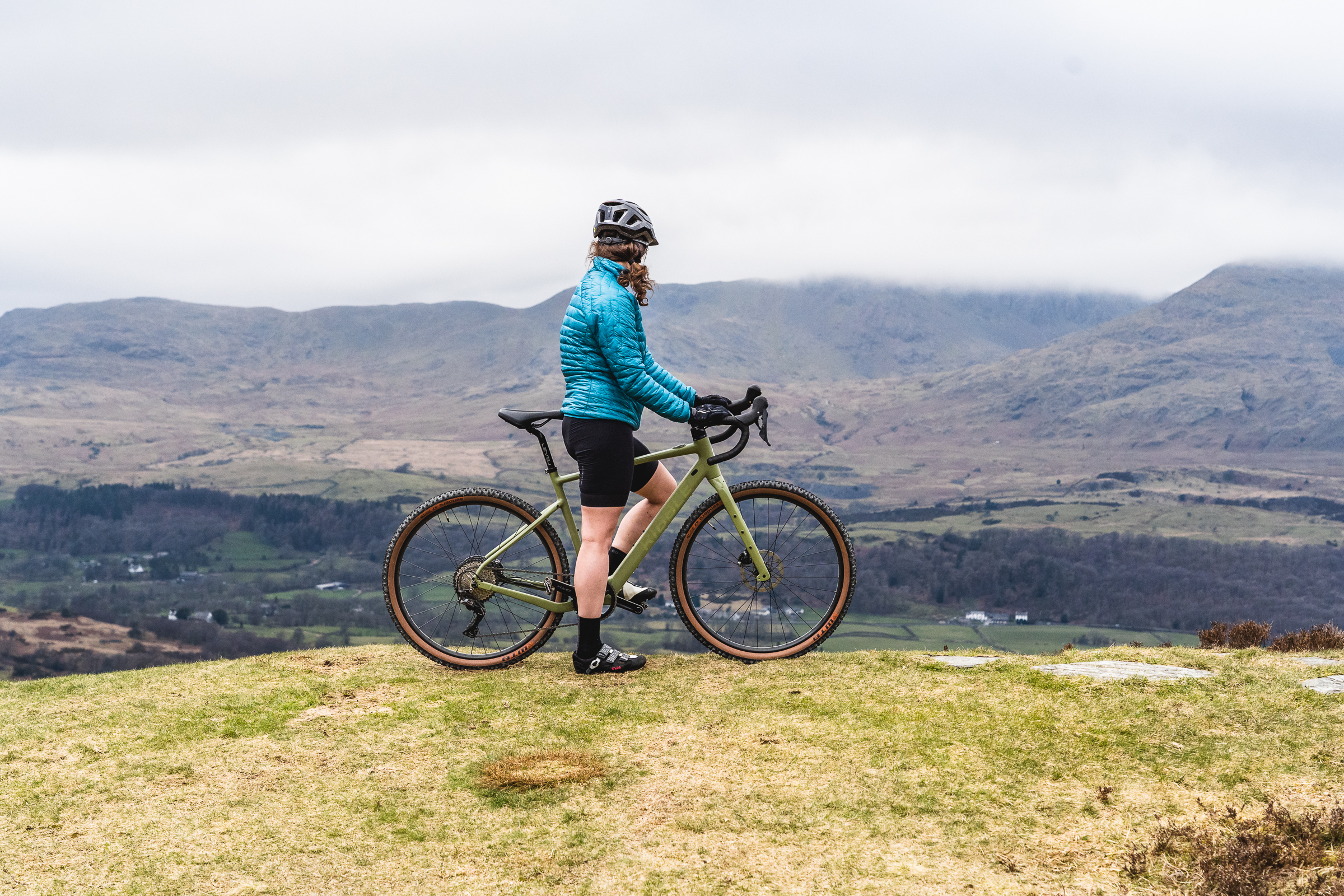
The Gravel AL e's power-assisted range and all-terrain capability mean that even the highest mountains are within reach.
Ribble Weldtite conquers the epic Dirty Reiver gravel challenge aboard their Gravel SL and CX SL's. Read about how they got on here.
Keep up to date with the exploits of the Garden Shed UK - Ribble - Verge Sport cyclocross team here.
How do you prepare your bike for the travails of winter? Click here to view our top tips for exiting the winter months in fine shape for the season ahead.

